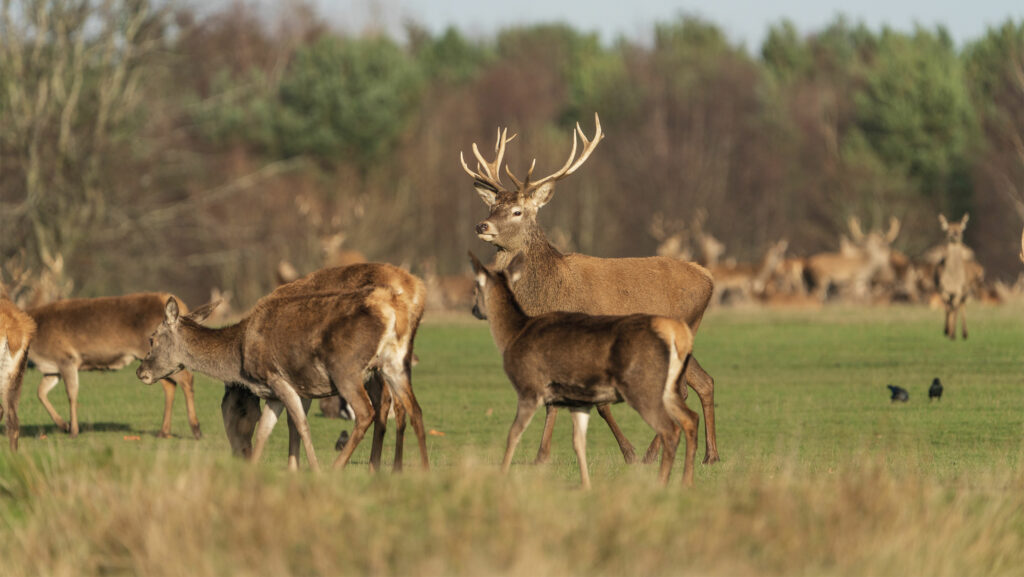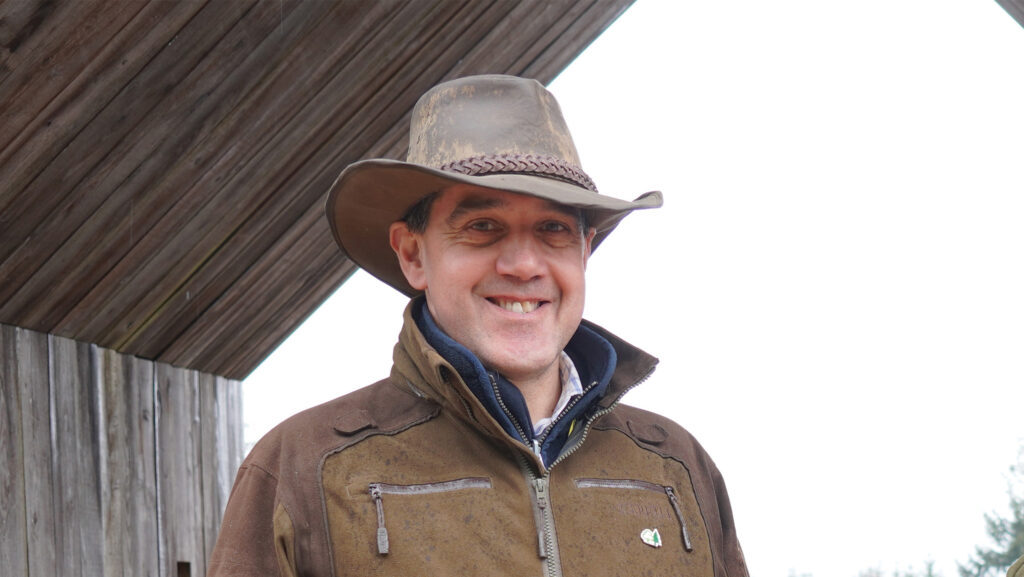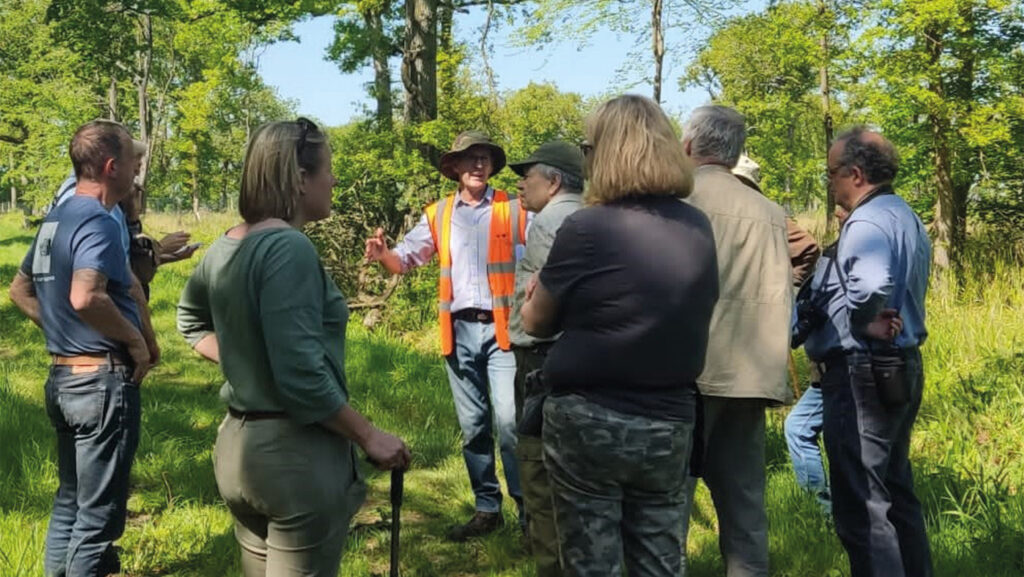How farmers can tackle the booming deer population
 © Adobe Stock
© Adobe Stock Deer control is an emotive subject, but as the numbers living wild in the English countryside have soared, with consequences for food crops, trees and hedges, it is an option that is gaining wider support.
Farmers Weekly understands that government ministers are considering publishing a new deer management strategy for England, which could see several new measures introduced in an effort to mitigate the impacts of deer.
See also: Are wolves the solution to booming deer population?
Forestry Commission deer adviser David Jam says those impacts on some landowners have run into tens of thousands of pounds, in some cases hundreds of thousands.
“In extreme examples, when there are large numbers of deer and high value crops involved, more than that,” he says.
That loss comes not only from the destruction of crops, but from the downgrading of produce and yield losses.
A deer might trample the ridges on potato crops, for example, resulting in green potatoes from exposure to the light, or contaminate combinable crops with faeces, resulting in buyers rejecting grain.
Compaction by deer hooves is also a contributory factor in the increased prevalence of blackgrass.

David Jam © Defra
Numbers game
It is often the sheer numbers of deer that are the problem.
A fallow deer consumes the same as a large ewe, and the impact of large herds can be significant.
“Some groups of fallow deer are now in excess of 1,000 deer. No farmer would want a 1,000 of their neighbour’s sheep on their land,” says Mr Jam.
It is not just crops that are damaged, but trees and hedges too, through bark stripping, the eating and trampling of woodland understories, and deer browsing on newly planted hedging plants.
Such browsing is seen as one of the biggest threats to nature recovery in native woodlands.
Management
Deer management is widely used in England as a means of controlling numbers, helped by financial incentives such as Higher Tier Countryside Stewardship payments, on whole or part parcels where deer have been identified in a woodland management plan.
The payment rate is set at £105/ha and there is an expectation of agreed levels of culling activity.
These payments have been available for two years as part of the preparatory work for a new deer management strategy, and there has been a good uptake.
“It has been well received by landowners,” says Mr Jam.
This payment will continue to be available in the new environmental schemes being rolled out.
But new deer management measures being considered could also include actions to increase sector skills, improve evidence, and provide advice on the effective management and culling of deer.
Actions to support the production and supply chain for wild venison that would result from increased levels of control may also be looked at.
Right skill set
Adrian Jowitt, principal woodland policy adviser at Natural England, says that, while many landowners authorise individuals to control deer, it is often not done effectively.
“Farmers need to get to a place where they are learning to manage their deer managers, so that the people that they have undertaking deer control on their land are delivering the outcomes the landowner needs. In many places, that hasn’t been happening,” he says.
Mr Jowitt likens it to a need for deer managers to have the skill sets required of others employed in a farm business.
“If a farmer had someone coming in to spray for them, they wouldn’t expect them to do that blindly, or if they are employing a relief milker, the standards expected are very clear.”
Through advice, incentives and training opportunities, a Defra strategy could help increase the numbers of people with the necessary skills for controlling deer populations.
Collaboration
To be effective, deer control needs to be delivered at a landscape scale, through collaboration between groups of neighbouring farmers.
“If you have herding species of deer, such as red, fallow or sika, it is imperative that farmers work on a landscape scale rather than on an individual holding basis,” says Mr Jowitt.
The previous government had supported licensing being streamlined through the establishment of a class licensing system.
Under the Deer Act 1991, in exceptional circumstances, a night licence is available, but it is an individual licence and securing it can be a protracted process.
The right qualifications
Industry-recognised qualifications exist in the form of the Deer Stalking Certificates (DSC) 1 and 2 to promote high standards in the humane management of wild deer. These are supported by the deer sector and delivered nationally by a number of training providers.
Qualifications include marksmanship, law, safety, and the humane control of deer, as well as dealing with carcasses hygienically.
Case study: Boughton Estate, Northamptonshire
Controlling and monitoring the vast numbers of deer roaming wild onto the Boughton Estate and surrounding countryside in Northamptonshire is literally a full-time job.
It takes an estimated 300-350 man days a year, and that’s why the £105/ha Countryside Stewardship payment – which allows the estate to implement a deer control and management programme – has been so important.
It gives the business the resources to employ a full-time wildlife ranger to co-ordinate that programme, which also includes grey squirrel controls, on the 4,500ha estate.
Jonathan Plowe, woodland manager at Boughton Estate, part of Buccleuch Estates, says the payment had allowed a “step change” in how it approaches deer management.
“We have culled about 450 deer this year,” he says. “In previous years, excluding during the pandemic, we have struggled to achieve 250.’’
The ultimate aim is to restore balance in ecosystems across the 1,000ha of woodland and the land being farmed.
Impact
A large proportion of the woodlands are classified as ancient woodland sites and include an important site of special scientific interest.
Each mature fallow deer can eat several kg of vegetation each day and that can have a significant effect not only on the estate’s ecology, but also the financial returns for the farm and forestry departments, says Mr Plowe.
The deer found around Boughton are mostly fallow, but there are also populations of roe and muntjac.
Fallow can move across the estate in herds of more than 250, trampling and eating crops and young trees, and roaming across large areas with many different ownerships.
Control
Effective control is difficult to achieve if not carried out at a landscape scale.
Deer numbers have reached a point where controlling them is very much a professional operation.
The time and physical effort required is beyond what most recreational stalkers can afford, Mr Plowe reckons.
During the culling season – generally 1 August to 1 April, and 1 November to 31 March for fallow does – the estate drafts in trained contractors qualified to at least DSC 2 level.
The contractors operate as a team under a management plan drawn up by the wildlife ranger.
The estate has used the Countryside Stewardship payment to cover the expenses of the stalkers and provide suitable facilities.
“If you want them to commit to turning up, to act professionally and work as a team, you have to make sure they are financially incentivised and the infrastructure is of a suitable standard,” says Mr Plowe.
“All that is a cost to the estate, but the payback is less damage to the forestry side of things and the farming crops.”
Model approach

Jonathan Plowe leading a discussion on deer control for the Royal Forestry Society © Boughton Estate
The model of deer control most common in the UK is to rent out the shooting on sections of woodland and farmland.
But this can create issues when trying to achieve landscape scale results, and the rise in the deer population indicates that this approach isn’t working, says Mr Plowe.
“Unfortunately, the person who pays the most for rights is often not the person who will do the most in terms of deer control.
“They might only shoot there once a year, so deer numbers just get out of control and the numbers rise to the extent that the deer have to expand their range to find more resources.”
This leads to migration onto other owners’ land and crops.
Mr Plowe says the estate should only need to cull one-third of its resident deer population every year to keep numbers stable, but high immigration from the surrounding areas means this is not enough.
“The step change that the deer grant has enabled will need to be maintained to keep the population at a level where the damage to the biodiversity, forestry and food crops is acceptable,” he says.

